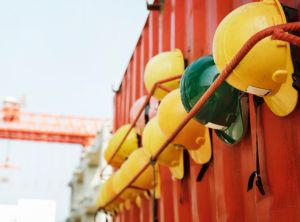 The importance of building more and more homes to improve our economy will inevitably put more pressure on our environment. The environment has prevailing design standards and impacts which will assist in minimizing the effects, the question is, are they really enough? Debatably, we need thorough planning, design and a firm construction ecosystem driven by the environmental sustainability on any construction project as our common and core value to our way forward.
The importance of building more and more homes to improve our economy will inevitably put more pressure on our environment. The environment has prevailing design standards and impacts which will assist in minimizing the effects, the question is, are they really enough? Debatably, we need thorough planning, design and a firm construction ecosystem driven by the environmental sustainability on any construction project as our common and core value to our way forward.
The public debates on construction and environmental issues have taken a simplistic path like laying a building on previously industrialized brownfield sites, which is more appealing than considering or developing an agricultural land or the countryside. In the long run, brownfield sites always have significant ecological advantages in densely populated areas in a region.
Open mosaic habitats on existing brownfield sites can be effective in air pollution removal and often rich in birds, invertebrates and some unusual plant species. Improving, protecting and facilitating access to some of these places could be a bit more beneficial than preserving agricultural land, which might even be of low quality.
Environmental conservations and protection measures in construction contracts and even sites must become more and more stringent. But what if the contract is given to a person who runs the rest of his business in ways that barely protect the environment or waste resources? The kind of partnership working we demand can’t be just clicked on like a mere switch when a particular project needs it. Any industry having a construction project needs to hold sustainably throughout the whole process of the supply chain and be driven by self-integrity.
Any environmental sustainable construction project must have the following elements:
1. Environmental survey
The civil works or construction projects impact on our environment must be evaluated and surveyed systematically. It should be carried out on the basis of some environmental impacts comprehensively made survey and their derivative effects on our environment in conjunction with use, decomposition, and construction.
2. Environmental priorities
A number of impacts on the environment to a certain construction project should be selected, and then special efforts are made to reduce these impacts dramatically.
3. Environmental goals
Targeted goals of the construction project must be formulated so that the efforts applied to be adjusted and effectively meet the goals.
4. Measures
A gross measures list must be compiled to contribute to meeting the outlined environmental goals and also help in attaining the possible greatest environmental advantages.
Natural structures and green areas around any construction sites must be preserved to ensure their optimal growing and living conditions. Fencing around the site must be at a distance from trees trunks and other natural things so as to retain the mulch structure and natural permeability. If the area must be cleared to create more space, then tree removal Brisbane should be the last option to consider. The greenery percentage as compared with the paved and built areas must be maintained as much as possible, and preferably be increased in the individual running project.
During any construction project, we should try as much as possible to protect what we have and also seek opportunities to improve our biodiversity and environment. Development is important in any place as so is our existing environment.
Shift Frequency © 2019 – Educational material
